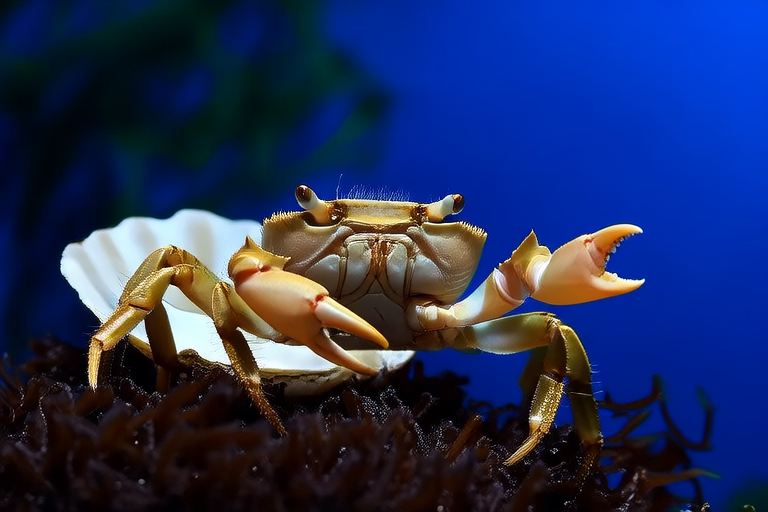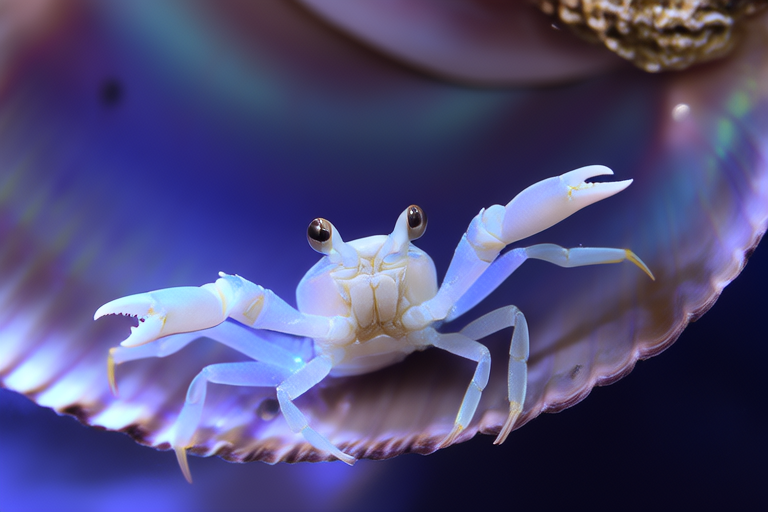
Meet the Pea Crab: Nature’s Smallest Ocean Symbiont
The ocean is home to countless fascinating creatures, each playing a unique role in its complex ecosystem. Among these is the pea crab, a tiny crustacean that has captured the attention of marine biologists for centuries. This article delves into the world of the pea crab, exploring its size, habitat, diet, and interactions with host organisms. We will also uncover some interesting facts about its behavior and adaptations, highlighting its significance within its ecosystem and discussing the challenges it faces.
A Tiny Marvel
Pea crabs, belonging to the family Pinnotheridae, are among the smallest crabs in the world. These diminutive creatures typically range from 4 to 8 millimeters in length, making them no larger than a pea – hence their name. Their petite size belies their importance in marine ecosystems. Despite their small stature, pea crabs have adapted to thrive in various environments, showcasing remarkable resilience and adaptability.
Habitat and Distribution
Pea crabs are found in oceans around the world, inhabiting both shallow coastal waters and deeper offshore areas. They prefer habitats rich in biodiversity, such as seagrass beds, coral reefs, and mangrove forests. These environments provide ample opportunities for the crabs to establish symbiotic relationships with various host organisms. The diversity of habitats ensures that pea crabs can find suitable partners for mutual benefit, contributing to their widespread distribution.
Symbiosis: A Key to Survival
The pea crab’s most defining characteristic is its role as a symbiont. These crabs form mutually beneficial relationships with other marine organisms, including bivalves, sea cucumbers, and sea anemones. In these partnerships, the pea crab finds shelter and protection while providing its host with a service, often cleaning parasites or detritus from the host’s body. This symbiotic relationship is crucial for both parties, enhancing their chances of survival in the competitive marine environment.
Hosts and Partnerships
One of the most common hosts for pea crabs is the oyster. The crab resides within the oyster’s shell, benefiting from the protection offered by the hard exterior. In return, the pea crab feeds on the oyster’s food particles, helping to keep the surrounding water clean. This partnership is particularly advantageous for both organisms in crowded oyster beds, where competition for resources is high.
Pea crabs also form symbiotic relationships with sea cucumbers. By living inside the cucumber’s body cavity, the crab gains access to nutrients and protection. The sea cucumber, in turn, benefits from the crab’s feeding activities, which help to maintain the internal environment. This relationship underscores the intricate web of life within marine ecosystems.
Diet and Feeding Habits
The diet of pea crabs primarily consists of plankton and organic debris found in the water column. Due to their small size, they are unable to capture large prey, so they rely on filtering microscopic organisms from the water. This feeding strategy not only sustains the crabs but also contributes to the overall health of their aquatic environment. By consuming excess organic matter, pea crabs play a vital role in nutrient cycling, ensuring that marine ecosystems remain balanced.
Behavior and Adaptations
Pea crabs have developed several adaptations that allow them to thrive in their symbiotic relationships. One of the most notable is their flattened body shape, which enables them to fit snugly within the shells of their hosts. Additionally, they possess long, thin legs that aid in capturing plankton from the water. These adaptations highlight the pea crab’s specialization for life within its host organism.
Despite their small size, pea crabs exhibit complex behaviors that reflect their intelligence and adaptability. For instance, they are capable of recognizing different species of hosts and adjusting their behavior accordingly. This ability to tailor their approach to various environments demonstrates the crab’s sophisticated understanding of its surroundings.
Importance in Marine Ecosystems
The pea crab plays a crucial role in maintaining the balance of marine ecosystems. By forming symbiotic relationships with various host organisms, these crabs contribute to the overall health and stability of their habitats. Their feeding habits help to regulate nutrient levels, ensuring that other organisms have access to essential resources. Moreover, pea crabs serve as indicators of environmental health, as changes in their population can signal shifts in the broader ecosystem.
Threats and Conservation Efforts
Despite their importance, pea crabs face numerous threats that challenge their survival. Habitat destruction, pollution, and climate change pose significant risks to these tiny crustaceans. As human activities continue to impact marine environments, the survival of pea crabs and their symbiotic partners becomes increasingly precarious.
To address these challenges, conservation efforts focus on protecting the habitats of pea crabs and their hosts. Initiatives aimed at reducing pollution and promoting sustainable fishing practices help to create healthier marine ecosystems. Furthermore, research into the biology and behavior of pea crabs provides valuable insights that inform conservation strategies, ensuring the long-term survival of these remarkable creatures.
Conclusion
The pea crab is a fascinating example of nature’s adaptability and resilience. Its symbiotic relationships with host organisms demonstrate the intricate connections within marine ecosystems. By understanding the role of pea crabs and the challenges they face, we can work towards preserving these delicate balances for future generations. As we continue to explore the wonders of the ocean, the pea crab stands as a testament to the beauty and complexity of life beneath the waves.





